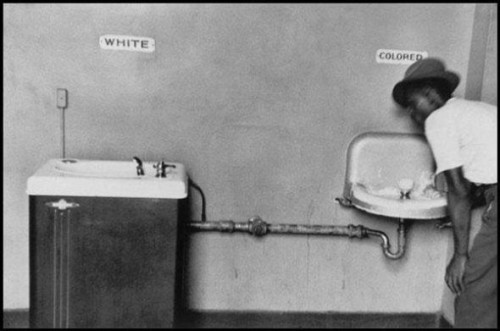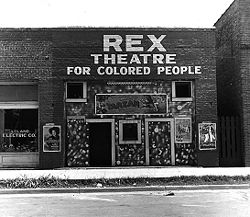- 1940’s -World War II
-Mexican
American soldiers
- 1950’s
· Emmett Till
·
M. L. K./ Malcolm X

The Civil Rights started as an outcome to the lack of equality among Mexican Americans, Black Americans gay Americans and women.
During these times there was a lot of violence, this week I would like to focus on, what I think is, the most prominent and moving of all.
African Americans and Discrimination
Racial Segregation was seen across the nation at movie theaters, water fountains, dinners and more.
There were many lynching groups among white people and across the nation; some legal like the Texas Rangers- to enforce “the law.”
This page Without Sanctuary has an outstanding recollection of every cataloged lynch during the 1920. Emphasis on cataloged only during the 1920’s, this was something that had been going on for far longer before and after.
The video of the week is a documentary of Emmett Till.
The Untold Story of Emmet Louis Till.
His story is one that moved the nation, one of many that got recorded and helped in the cause of the Civil Rights movement.
This documentary is very emotional and moving, and contains graphic material; I couldn’t stand it and had to close my eyes in some parts. It was so brave of an action from his mother and now it seems incredible that such a small action by Emmett caused him so much, but that’s how it was back then.

The Civil Rights started as an outcome to the lack of equality among Mexican Americans, Black Americans gay Americans and women.
During these times there was a lot of violence, this week I would like to focus on, what I think is, the most prominent and moving of all.
African Americans and Discrimination
Racial Segregation was seen across the nation at movie theaters, water fountains, dinners and more.
There were many lynching groups among white people and across the nation; some legal like the Texas Rangers- to enforce “the law.”
This page Without Sanctuary has an outstanding recollection of every cataloged lynch during the 1920. Emphasis on cataloged only during the 1920’s, this was something that had been going on for far longer before and after.
The video of the week is a documentary of Emmett Till.
The Untold Story of Emmet Louis Till.
His story is one that moved the nation, one of many that got recorded and helped in the cause of the Civil Rights movement.
This documentary is very emotional and moving, and contains graphic material; I couldn’t stand it and had to close my eyes in some parts. It was so brave of an action from his mother and now it seems incredible that such a small action by Emmett caused him so much, but that’s how it was back then.






























